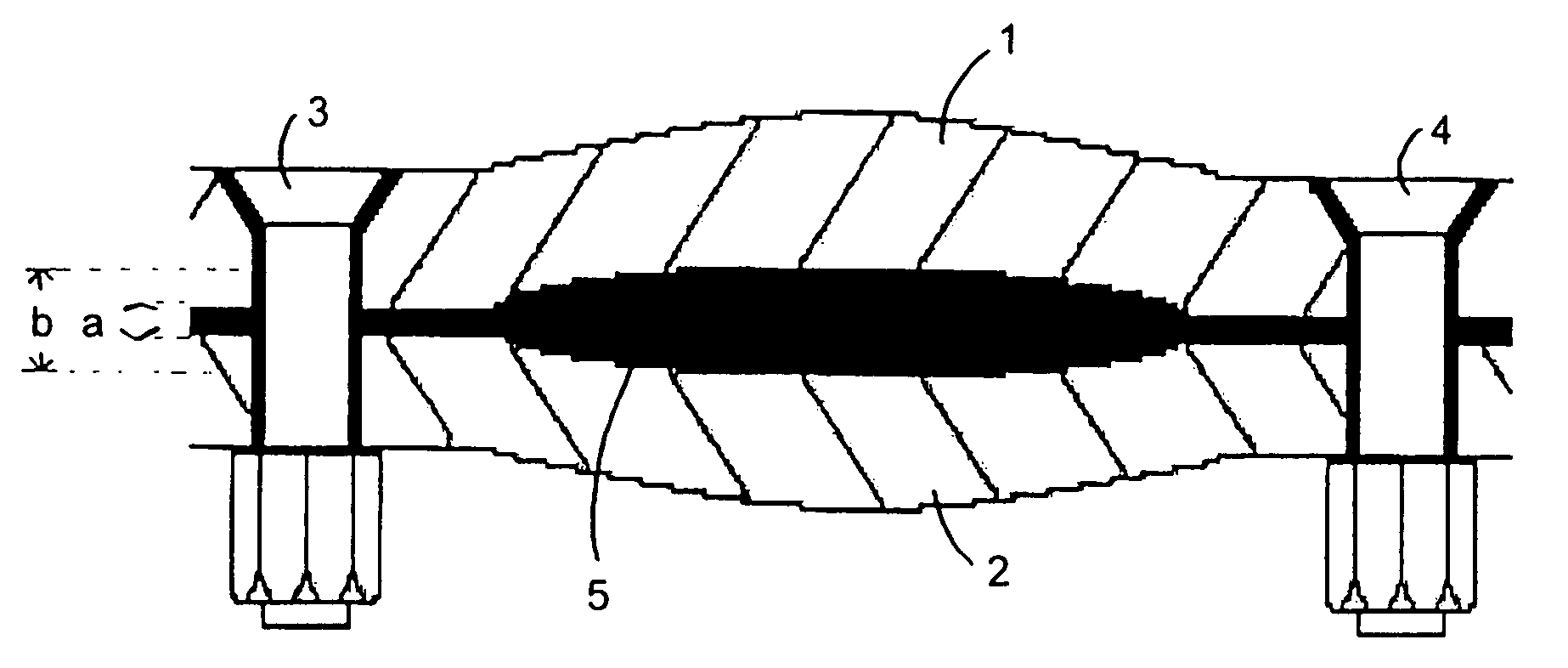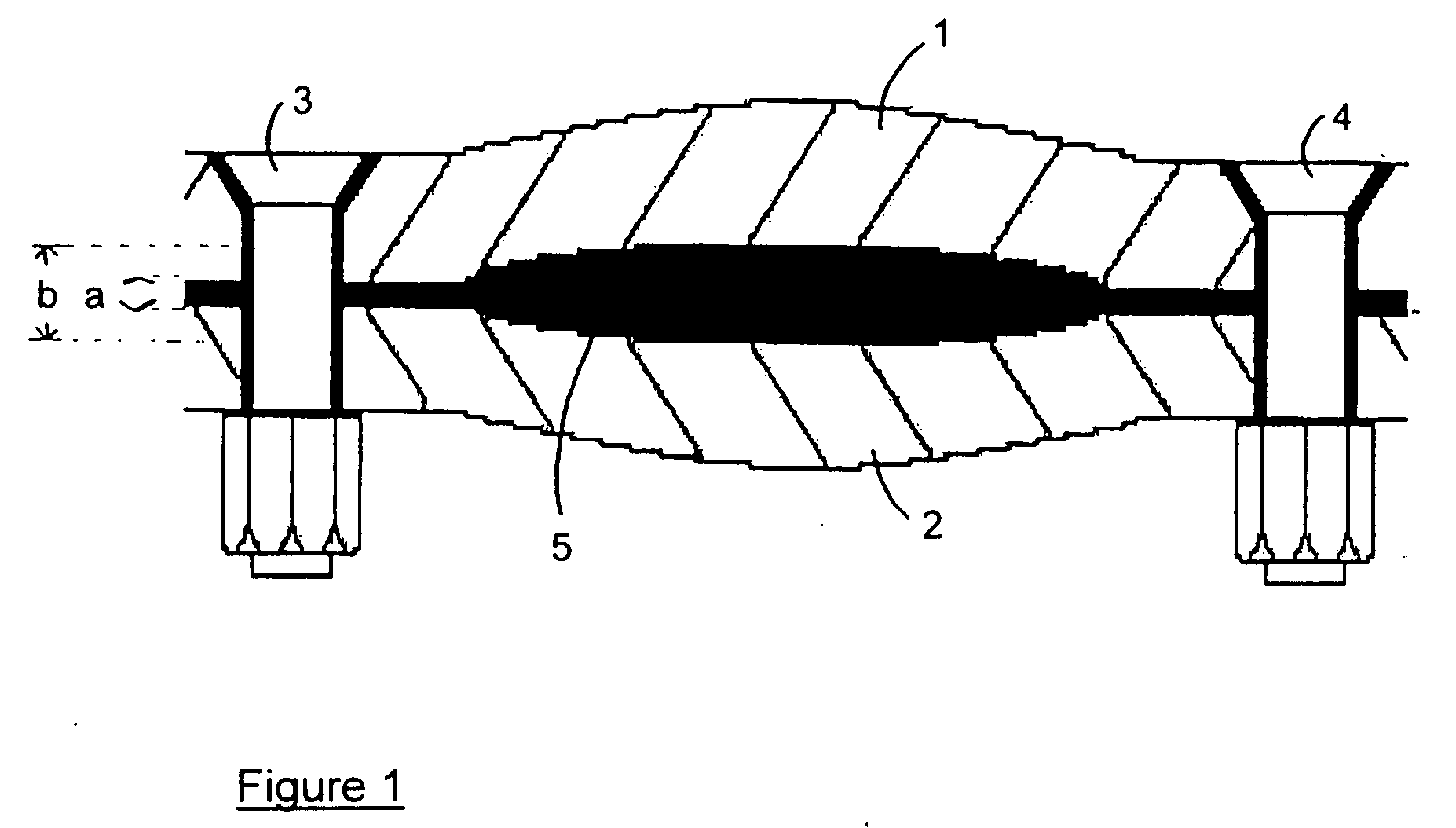Method of sealing a joint
a joint and sealing technology, applied in the direction of engine seals, aircraft components, engine components, etc., can solve the problems of increasing the weight of the aircraft, affecting the sealing effect, and laborious pre-mixing of sealant components, so as to achieve high load-transferring, high fatigue resistance, and efficient sealing
- Summary
- Abstract
- Description
- Claims
- Application Information
AI Technical Summary
Benefits of technology
Problems solved by technology
Method used
Image
Examples
example 1
[0062] A joint was specified to have a maximum joint face separation in the quilted areas between the bolts of 0.25 mm. Thus, the sealing gap for the joint was 0.25 mm. A suitable sealant material was found in tests to have a fractional maximum sealing thickness of 80% and a fractional fully compressed thickness of 40%.
[0063] In order to seal effectively over the whole joint, a thickness of sealing material must be used such that the effective sealing range is at least equal to the sealing gap of 0.25 mm. Thus 0.25 mm must be equal to (80%−40%)=40% of the minimum thickness, that is, the uncompressed thickness of the sealing material must be at least 0.625 mm. Using a sealing material of thickness 0.625 mm (100%) would give a maximum joint face separation of 0.5 mm (80%) and ajoint stand-off of 0.25 mm (40%).
example 2
[0064] In the joint described in Example 1, a 1.1 mm thickness of the same sealing material is used. The effective sealing range is 1.1 mm×(0.8−0.4)=0.44 mm. That effective sealing range is 0.19 mm greater than the required sealing range of 0.25 mm but that margin may be desired to allow for surface defects and movement. The joint stand-off is 1.1 mm×0.40=0.44 mm.
example 3
Preparation of a Reinforced Polysulphide Sealing Material
[0065] A conventional manganese dioxide polysulphide sealant, Chemetall MC238-A1 / 2 having a faster cure time than is normally used in airframe assembly (½ hour work-life grade), was mixed and evenly applied to a 200 mm×200 mm release sheet of PTFE. A 150 mm×150 mm square of 120 gram per square meter woven glass-fibre cloth of maximum thickness 0.25 mm was placed over the smoothed out sealant layer. Sealant was worked through the woven glass cloth using a plastic spatula (to remove entrapped air) and a second layer of sealant was smoothed over the glass with the spatula. A second PTFE release sheet was placed over the sealant and glass layers and the assembly was transferred to a hand press where the press was ‘bumped’ (opened and closed) to remove any further entrapped air and to flow the sealant to an even film thickness.
[0066] The press was clamped fully shut and left to cure. After 16 hours curing time, the press was open...
PUM
 Login to View More
Login to View More Abstract
Description
Claims
Application Information
 Login to View More
Login to View More - R&D
- Intellectual Property
- Life Sciences
- Materials
- Tech Scout
- Unparalleled Data Quality
- Higher Quality Content
- 60% Fewer Hallucinations
Browse by: Latest US Patents, China's latest patents, Technical Efficacy Thesaurus, Application Domain, Technology Topic, Popular Technical Reports.
© 2025 PatSnap. All rights reserved.Legal|Privacy policy|Modern Slavery Act Transparency Statement|Sitemap|About US| Contact US: help@patsnap.com



